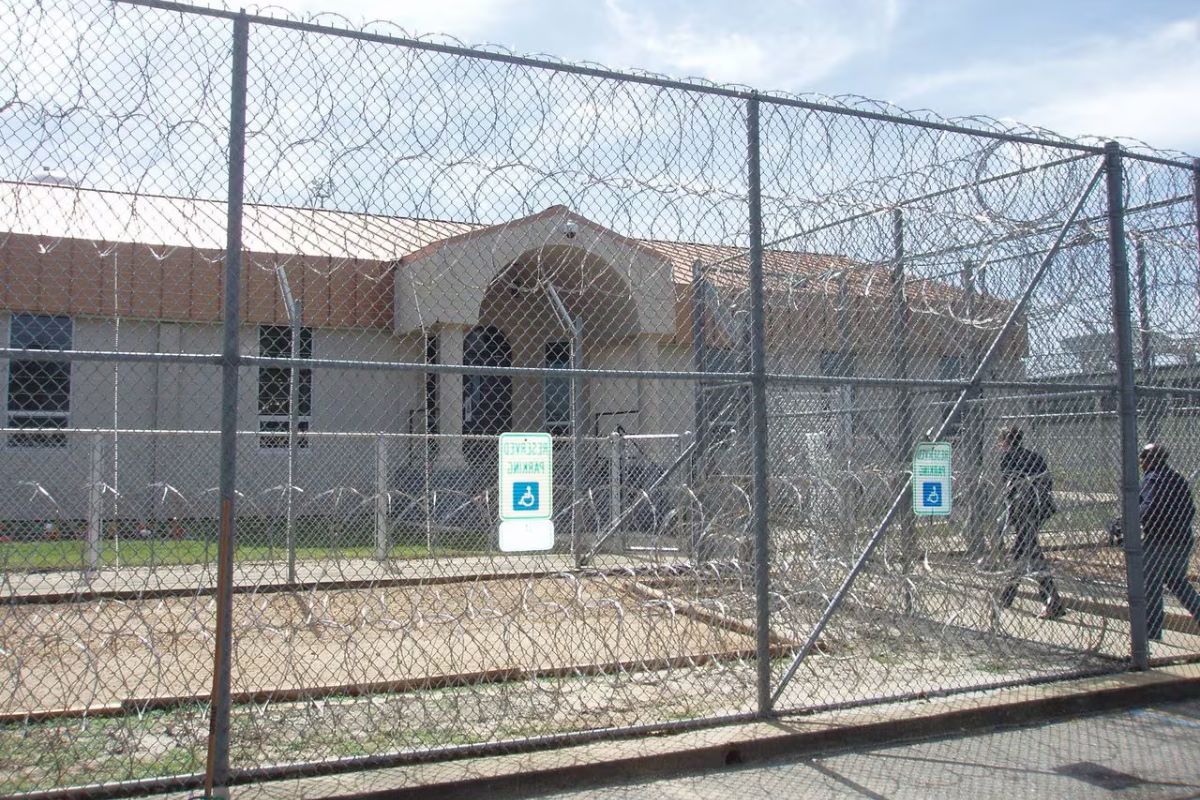Federal Judge Denies Injunction: In a recent legal setback, a federal judge has denied the injunction on Kenneth Eugene Smith’s execution, allowing the use of nitrogen hypoxia.
Smith’s preference for this method has sparked controversy due to the lack of conclusive evidence on its pain levels.
With the execution date scheduled for January 25, the Alabama Attorney General emphasizes accountability for the murder-for-hire case.
This article examines the judge’s decision and the ongoing debate surrounding the use of nitrogen hypoxia in executions.
Key Takeaways
- U.S. District Judge Austin Huffaker denies the petition for a preliminary injunction, allowing Kenneth Eugene Smith’s execution through nitrogen hypoxia to proceed.
- The rejection of the injunction is a significant setback for opponents of nitrogen hypoxia, setting a precedent for future use of this execution method.
- Smith consistently expresses a preference for nitrogen hypoxia as his execution method, arguing that lethal injection violates his Eighth Amendment rights.
- The lack of an established protocol and uncertainty surrounding the potential pain and efficacy of nitrogen hypoxia raise concerns and leave room for further debate and research.
Legal Setback: Judge Rejects Injunction, Allows Nitrogen Hypoxia Execution
Following the dismissal of a petition for a preliminary injunction by U.S. District Judge Austin Huffaker, the planned execution of Kenneth Eugene Smith through nitrogen hypoxia has been given the green light, indicating a significant legal setback for those opposing the use of this method.
The rejection of the injunction means that Smith’s execution can proceed as planned, using nitrogen hypoxia as the chosen method.
This decision marks a turning point in the case, which has faced numerous challenges and delays, including the cancellation of Smith’s previous lethal injection execution.
Nitrogen hypoxia, also known as inert gas asphyxiation, involves the individual inhaling pure nitrogen, resulting in a painless and peaceful death.
This ruling sets a precedent for the use of nitrogen hypoxia as an alternative form of execution in the future.

READ MORE: US Judge Allows First Nitrogen Gas Execution in Alabama Approval
Kenneth Eugene Smith’s Legal Battle: Preference for Nitrogen Hypoxia
Throughout his legal battle, Kenneth Eugene Smith has consistently expressed a preference for nitrogen hypoxia as the method of his execution. Nitrogen hypoxia involves replacing the oxygen in the air with nitrogen gas, resulting in a painless death by oxygen deprivation. Smith’s preference for this method stems from his belief that it is a more humane and painless way to die compared to lethal injection, which he argues violates his Eighth Amendment rights. However, despite his preference, the recent legal proceedings have resulted in the denial of an injunction for Smith’s execution with nitrogen hypoxia. The lack of an established protocol for nitrogen hypoxia at the time of the initial challenge may have contributed to this decision.
| Nitrogen Hypoxia | Lethal Injection |
|---|---|
| Painless death | Potential pain |
| Oxygen deprivation | Drug-induced death |
| Eighth Amendment rights | Challenged by Smith |
| More humane method | Established protocol |
| Lack of established protocol | Controversial method |
Note: This table provides a comparison between nitrogen hypoxia and lethal injection, highlighting the reasons behind Smith’s preference for the former and the challenges associated with it.
Nitrogen Hypoxia Protocol: Lack of Conclusive Evidence on Pain
The lack of conclusive evidence on the potential pain caused by the nitrogen hypoxia protocol raises concerns in the ongoing legal battle surrounding Kenneth Eugene Smith’s execution method.
Despite the concerns raised by Smith’s attorneys, Judge Huffaker found insufficient evidence to support the claim that the execution method would result in substantial additional pain. However, the lack of definitive research on the subject leaves room for doubt and further debate.
It is essential to consider the potential consequences of using nitrogen hypoxia, as its efficacy and potential for pain remain uncertain. The absence of conclusive evidence on the pain caused by the nitrogen hypoxia protocol underscores the need for further research and evaluation to ensure that executions are carried out in a manner that is both humane and constitutional.

Execution Date Approaches: January 25 Scheduled for Nitrogen Hypoxia
As the execution date of January 25 approaches, the use of nitrogen hypoxia as the chosen method for Kenneth Eugene Smith’s execution continues to be a subject of debate and concern.
Nitrogen hypoxia, also known as inert gas asphyxiation, involves replacing the oxygen in the air with nitrogen, leading to a painless death by oxygen deprivation. Supporters argue that this method is more humane and less prone to complications compared to other execution methods, such as lethal injection.
However, opponents express concerns about the lack of evidence regarding its effectiveness and potential for botched executions. They also question the ethical implications of using a method that has not been extensively studied or proven to be reliable.
With the date approaching, the controversy surrounding the use of nitrogen hypoxia remains unresolved.
Alabama Attorney General’s Response: Accountability for Murder-for-Hire
With the execution date of January 25th drawing near, the Alabama Attorney General’s response focuses on holding Kenneth Eugene Smith accountable for the murder-for-hire crime he committed. The Attorney General’s stance can be summarized as follows:
- Upholding justice: The Alabama Attorney General views the denial of the injunction as a significant step towards ensuring that Smith faces the consequences for his actions. The state is determined to bring closure to the decades-old case.
- State responsibility: The Attorney General emphasizes the state’s duty to enforce the law and seek justice on behalf of the victims and their families. Holding Smith accountable serves as a deterrent to potential offenders and upholds the rule of law.
- Legal proceedings: The denial of the injunction sets the stage for the execution to proceed as scheduled, but further legal challenges may still arise. The Attorney General acknowledges the possibility of ongoing litigation but remains committed to pursuing justice.
- Closure for victims’ families: The Attorney General recognizes the importance of providing closure for the families of the victims who have waited for justice for over 35 years. Holding Smith accountable for his crime will bring a measure of peace and resolution to those affected by his actions.
Conclusion Of Federal Judge Denies Injunction
In a recent legal setback, a federal judge has denied an injunction for Kenneth Eugene Smith’s execution by nitrogen hypoxia. Smith has been battling for the preference of this execution method. However, there is a lack of conclusive evidence on the pain caused by nitrogen hypoxia.
As the execution date approaches on January 25, the Alabama Attorney General remains focused on holding Smith accountable for the murder-for-hire.
Our Reader’s Queries
What is the new execution method nitrogen hypoxia?
Carrying out an execution using nitrogen hypoxia entails compelling an individual to inhale only nitrogen, cutting off their oxygen supply for bodily functions, ultimately causing death. The U.S. Chemical Safety Board emphasizes that breathing pure nitrogen is safe only when it’s mixed with oxygen.
Who was the man executed with nitrogen?
In Atmore, Alabama, Kenneth Eugene Smith, found guilty in a 1988 murder-for-hire scheme, might make history as the initial death row inmate executed through nitrogen hypoxia in the U.S.
What gas is used for execution?
Back in 1924, Nevada introduced the use of cyanide gas in its quest for a more humane method of executing condemned prisoners. The first individual to face lethal gas was Gee Jon, with the state attempting to pump cyanide gas into Jon’s cell while he was asleep.
What chemical is used to execute?
The administered drugs include pancuronium bromide, a paralyzing agent; potassium chloride, which halts cardiac activity; and sodium thiopental, serving as an anesthetic.
Is death by nitrogen hypoxia painless?
Having experienced altitude hypoxia simulation during his training as a former Air Force and Delta Airlines pilot, Lippincott is confident that death by nitrogen hypoxia would be painless. He described the sensation as akin to feeling sleepy with a warm sensation.

